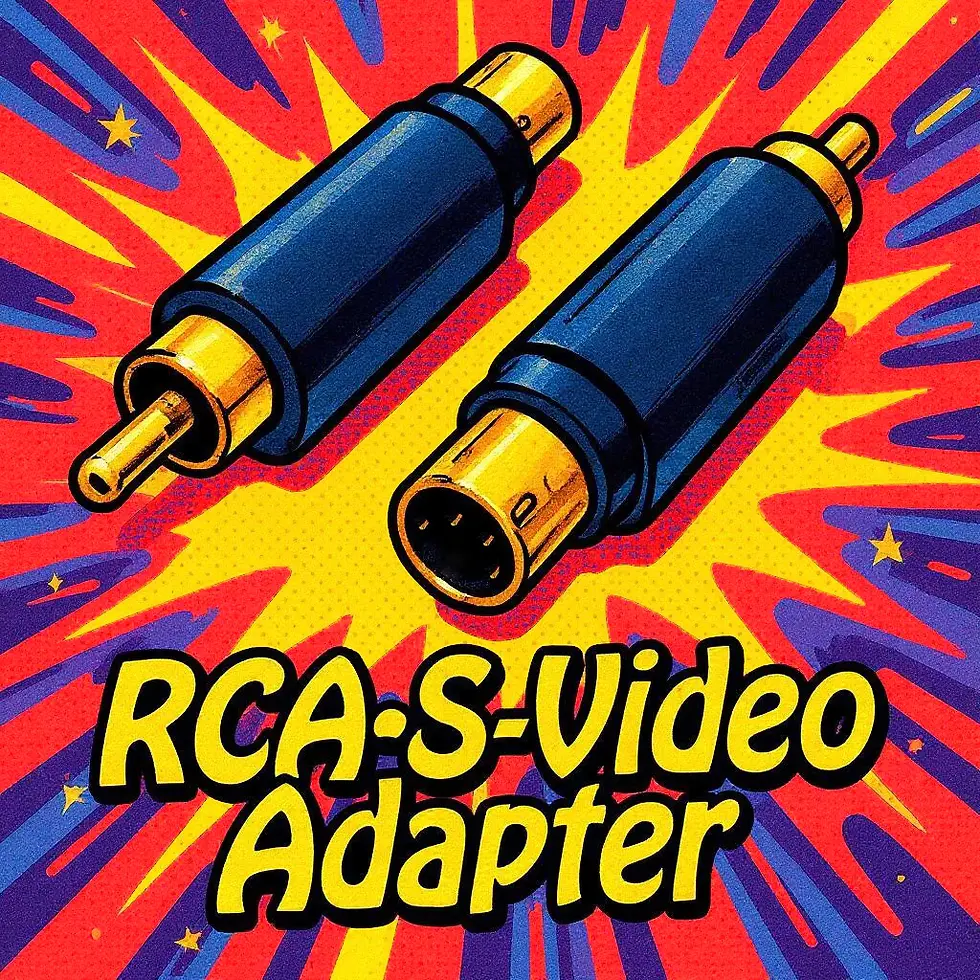🎥🔌 S-Video to Composite RCA Adapter
This passive adapter converts an S-Video signal into composite RCA format, allowing older TVs, capture cards, or monitors to display video from S-Video-only sources. It combines the separate luma/chroma channels into a single composite stream. No reverse conversion—this is strictly S-Video → RCA.
🔧 Adapter Form
- S-Video male → RCA male (direct plug-to-plug, common for camcorder output to TV input)
- S-Video male → RCA female (used with existing RCA cables)
- S-Video female → RCA male (less common, used with S-Video extension cables)
- S-Video female → RCA female (patching or chaining with gender changers)
- Passive only—no active signal processing or amplification
🖥️ Compatible Devices
- 🎥 S-Video side:
- Camcorders, DVD players, legacy laptops
- Video switchers and surveillance DVRs
- Retro gaming consoles with S-Video output
- 📺 RCA side:
- CRT televisions and AV receivers
- Capture cards and USB video digitizers
- Projectors and monitors with composite input
✅ Common Uses
- 📼 Connect S-Video camcorder to RCA-only TV or capture device
- 🎮 Display retro console output on composite-only screens
- 🧩 Integrate S-Video sources into composite-based AV setups
- 🧪 Test S-Video output using widely available RCA inputs
- 🏠 Repurpose legacy gear in home theater or archival workflows
🧠 Signal Format
- 🎞️ S-Video: Analog video with separate luma (Y) and chroma (C) channels
- 📡 RCA: Analog composite video (Y+C combined into one signal)
- 🔁 Adapter merges Y and C into a single composite stream
- 🧪 No resolution enhancement or signal balancing
- ⚠️ Quality loss expected—composite is lower fidelity than S-Video
⚠️ Things to Watch Out For
- 📉 Signal degradation—composite has lower sharpness and color accuracy
- 🔌 Not bidirectional—won’t convert RCA to S-Video
- 🧯 Some adapters may not work with all devices due to voltage or sync issues
- 🌀 Ground loop risk in mixed AV setups
- 🧪 May require manual configuration on source device (e.g., output mode toggle)
🛠️ Quick Tips for Beginners
- 🧭 Use S-Video male → RCA female for flexible cable routing
- 🔌 Keep adapter length short to minimize signal loss
- 🧪 Test with known-good RCA input before troubleshooting source
- 🧯 Label adapters clearly to avoid reverse-use confusion
- 🎛️ For better fidelity, consider using direct S-Video input if available



